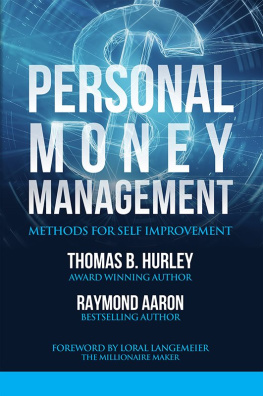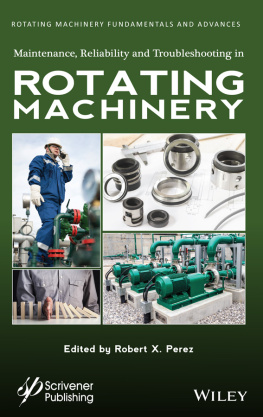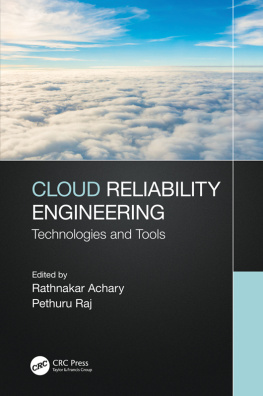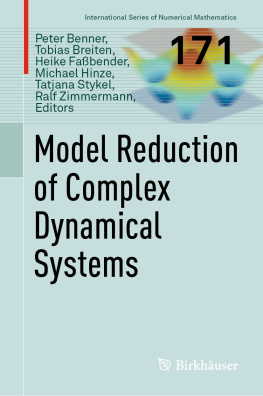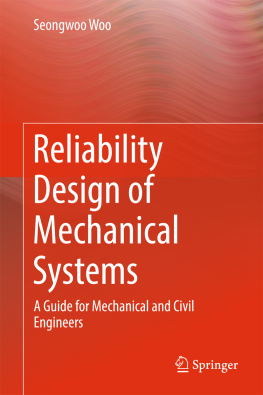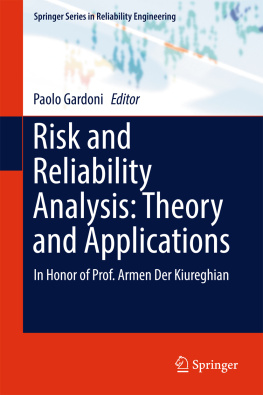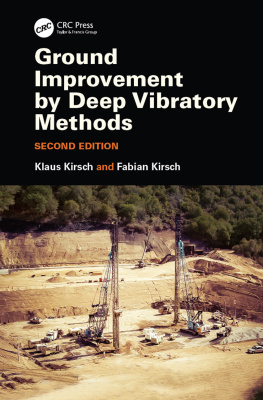Todinov - Methods for Reliability Improvement and Risk Reduction
Here you can read online Todinov - Methods for Reliability Improvement and Risk Reduction full text of the book (entire story) in english for free. Download pdf and epub, get meaning, cover and reviews about this ebook. City: Hoboken;NJ;USA, year: 2019;2018, publisher: John Wiley & Sons, Inc., genre: Romance novel. Description of the work, (preface) as well as reviews are available. Best literature library LitArk.com created for fans of good reading and offers a wide selection of genres:
Romance novel
Science fiction
Adventure
Detective
Science
History
Home and family
Prose
Art
Politics
Computer
Non-fiction
Religion
Business
Children
Humor
Choose a favorite category and find really read worthwhile books. Enjoy immersion in the world of imagination, feel the emotions of the characters or learn something new for yourself, make an fascinating discovery.

- Book:Methods for Reliability Improvement and Risk Reduction
- Author:
- Publisher:John Wiley & Sons, Inc.
- Genre:
- Year:2019;2018
- City:Hoboken;NJ;USA
- Rating:3 / 5
- Favourites:Add to favourites
- Your mark:
- 60
- 1
- 2
- 3
- 4
- 5
Methods for Reliability Improvement and Risk Reduction: summary, description and annotation
We offer to read an annotation, description, summary or preface (depends on what the author of the book "Methods for Reliability Improvement and Risk Reduction" wrote himself). If you haven't found the necessary information about the book — write in the comments, we will try to find it.
Todinov: author's other books
Who wrote Methods for Reliability Improvement and Risk Reduction? Find out the surname, the name of the author of the book and a list of all author's works by series.
Methods for Reliability Improvement and Risk Reduction — read online for free the complete book (whole text) full work
Below is the text of the book, divided by pages. System saving the place of the last page read, allows you to conveniently read the book "Methods for Reliability Improvement and Risk Reduction" online for free, without having to search again every time where you left off. Put a bookmark, and you can go to the page where you finished reading at any time.
Font size:
Interval:
Bookmark:
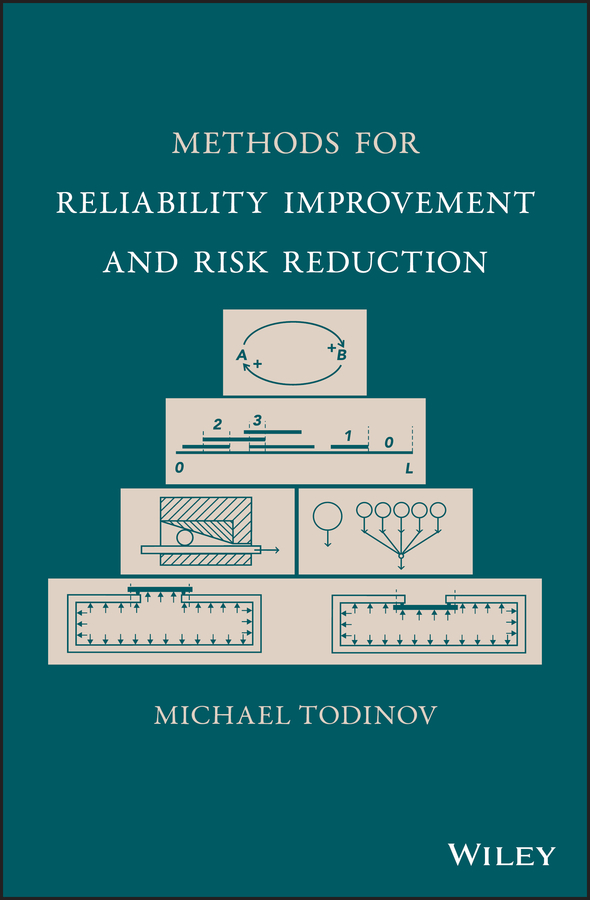
- Chapter 02
- Chapter 02
- Chapter 03
- Chapter 04
- Chapter 05
- Chapter 06
- Chapter 07
- Chapter 08
- Chapter 09
- Chapter 10
- Chapter 11
- Chapter 12
Michael Todinov
Oxford Brookes University
UK

Copyright
This edition first published 2019
2019 John Wiley & Sons Ltd
All rights reserved. No part of this publication may be reproduced, stored in a retrieval system, or transmitted, in any form or by any means, electronic, mechanical, photocopying, recording or otherwise, except as permitted by law. Advice on how to obtain permission to reuse material from this title is available at http://www.wiley.com/go/permissions.
The right of Michael Todinov to be identified as the author of this work has been asserted in accordance with law.
Registered Offices
John Wiley & Sons, Inc., 111 River Street, Hoboken, NJ 07030, USA
John Wiley & Sons Ltd, The Atrium, Southern Gate, Chichester, West Sussex, PO19 8SQ, UK
Editorial Office
The Atrium, Southern Gate, Chichester, West Sussex, PO19 8SQ, UK
For details of our global editorial offices, customer services, and more information about Wiley products visit us at www.wiley.com.
Wiley also publishes its books in a variety of electronic formats and by printondemand. Some content that appears in standard print versions of this book may not be available in other formats.
Limit of Liability/Disclaimer of Warranty
While the publisher and authors have used their best efforts in preparing this work, they make no representations or warranties with respect to the accuracy or completeness of the contents of this work and specifically disclaim all warranties, including without limitation any implied warranties of merchantability or fitness for a particular purpose. No warranty may be created or extended by sales representatives, written sales materials or promotional statements for this work. The fact that an organization, website, or product is referred to in this work as a citation and/or potential source of further information does not mean that the publisher and authors endorse the information or services the organization, website, or product may provide or recommendations it may make. This work is sold with the understanding that the publisher is not engaged in rendering professional services. The advice and strategies contained herein may not be suitable for your situation. You should consult with a specialist where appropriate. Further, readers should be aware that websites listed in this work may have changed or disappeared between when this work was written and when it is read. Neither the publisher nor authors shall be liable for any loss of profit or any other commercial damages, including but not limited to special, incidental, consequential, or other damages.
Library of Congress CataloginginPublication Data
Names: Todinov, M. T., author.
Title: Methods for reliability improvement and risk reduction / Michael
Todinov, Oxford Brookes University, UK.
Description: Hoboken, NJ, USA : Wiley, 2019. | Includes bibliographical
references and index. |
Identifiers: LCCN 2018033729 (print | LCCN 2018036493 (ebook | ISBN
9781119477310 (Adobe PDF | ISBN 9781119477594 (ePub | ISBN 9781119477587
(hardcover
Subjects: LCSH: Reliability (Engineering | Risk management. | System
failures (Engineering
Classification: LCC TA169 (ebook | LCC TA169 .T649 2019 (print | DDC
620/.00452dc23
LC record available at https://lccn.loc.gov/2018033729
Cover Design: Wiley
Cover Illustration: Michael Todinov
To the bright memory of my mother
The common approach to risk reduction is domainspecific and relies exclusively on detailed knowledge from a specific domain. Measures specific to the domain are selected for reducing the risk and risk reduction is conducted exclusively by the experts in the domain. The underlying argument is simple yet powerful. Why should, for example, a welding specialist or automotive engineer listen to and seek advice from a general risk expert on how to improve the reliability of the welds or the reliability of a car? After all, the risk expert is not normally familiar with the welding or automotive technology.
This argument contributed to creating the illusion that efficient risk reduction can be delivered successfully solely by using methods offered by the specific domain without resorting to general methods for risk reduction. This led to a situation that in many domains, even the existence of a general risk science has been forgotten. In textbooks on design of machine components, for example, there is hardly any mention of general methods for improving reliability and reducing the risk of failure.
The price for this illusion is that many industries have been deprived of effective risk reducing strategy and solutions. The same mistakes are made again and again, resulting in numerous accidents and inferior products and processes, associated with high risk of failure.
An important contributing reason for this highly undesirable situation is the absence of a framework of domainindependent methods that could provide vital methodological knowledge in reliability improvement and risk reduction.
With the exception of a very few simple and wellknown domainindependent methods for risk reduction, such as implementing redundancy, strengthening weak links, upgrading with more reliable components, simplification of components, systems and operations, and condition monitoring, the framework of domainindependent methods for risk reduction is missing. The absence of a framework of domainindependent risk reduction methods diminishes significantly the importance of risk science and poses serious questions about whether it actually adds value to various areas of human activity.
Consequently, proposing a framework of domainindependent methods for improving reliability and reduce risk was the primary motivation behind writing this book.
In this book, methods and principles related to improving reliability and reducing risk that can be classified as domainindependent are first reviewed and their limitations discussed. Next, new domainindependent principles and methods for reliability improvement and risk reduction are introduced, with a detailed discussion of the mechanisms through which they reduce risk.
The methods of reliability improvement and risk reduction presented in this book are based on a large number of available solutions, most of which came from mechanical engineering. Each of the available solutions was analysed for recurring reliabilityenhancing patterns and invariants. A certain level of abstraction was used to strip available solutions from the specific mechanical engineering context and uncover the underlying patterns governing the reliability improvement and risk reduction.
From the analysis of available solutions, various patterns and invariants emerged which were captured and distilled into categories, classes, and individual techniques. The application of the distilled new methods and principles has been illustrated with numerous reallife application examples and case studies. Many of the domainindependent methods reduce risk at no extra cost. This is a significant advantage to many traditional methods for reducing risk (e.g. redundancy, upgrading components, condition monitoring) which are associated with substantial investment.
Next pageFont size:
Interval:
Bookmark:
Similar books «Methods for Reliability Improvement and Risk Reduction»
Look at similar books to Methods for Reliability Improvement and Risk Reduction. We have selected literature similar in name and meaning in the hope of providing readers with more options to find new, interesting, not yet read works.
Discussion, reviews of the book Methods for Reliability Improvement and Risk Reduction and just readers' own opinions. Leave your comments, write what you think about the work, its meaning or the main characters. Specify what exactly you liked and what you didn't like, and why you think so.

